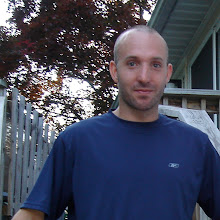Happy Thursday everyone! I hope everyone is in the midst of a great week!
I've written about this in the past but I thought it could use an update...
This past summer I started learning about the wonders of running barefoot. The thinking is the human foot is shaped the way it is for a reason...and artificially adding padding and support in a running shoe actually leads to significantly more injuries than they prevent. So I tried it out. The results surprised me. I felt stronger than ever. My running form immediately improved. My stamina even increased. And better still, the day after my first barefoot run I had an extra bounce in my step because me feet just felt better and stronger. I bring this all up because I just read that Harvard has done some research about the benefits of barefoot running. "New research, led by Harvard scientists and published today, shows that people who run barefoot or with minimal shoes - as people have done for millions of years - often land on their feet in a way that avoids a jarring impact. That’s very different from most shoe-clad runners, who crash down on their heels with every bound." This statement was absolutely true in my experience. Landing on your heel is much too painful if running barefoot. You will immediately adapt to land on your forefoot and roll to your instep, just like you're supposed to. The main reason I was so intrigued with barefoot running and training is because of my history with foot injuries. I have had Achilles injuries along with plantar fasciitis (nasty stuff.) I no longer have any issues at all. Vibram makes a Five Fingers minimal shoe that I will soon purchase and lose my running shoes forever. Now, if you are interested in making the switch to barefoot training please don't go crazy and attempt run a few miles or do some sprints right away. I learned my lesson on this one very early. Just like everything else a progression must be applied. My suggestion is this:
- Perform your 7 - 10 minute dynamic warm-up barefoot
- After a few weeks add some barefoot agility ladder work
- A few weeks later include an activity like jump rope or even jumping jacks
- Then hit the weights with no shoes on. A deadlift will feel great once you learn to properly use your feet.
- Now you're ready for a run...start slow though. Try a few 20 yard striders at 60% speed.
- Increase your speed and distance
